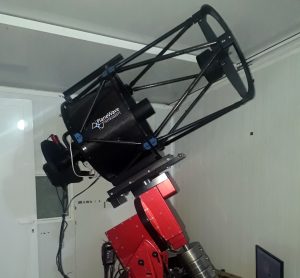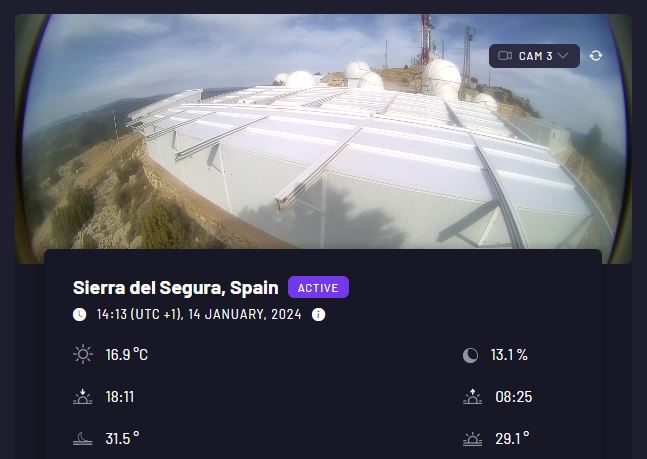2023 December 17
Using the Alnitak Remote Observatory in Spain
BAA member Maxim Usatov has developed a remote observatory, called Alnitak, in southern Spain and he has generously offered the BAA time on the main instrument which can be allocated to members to carry out various projects. The telescope is a Planewave 0.43-m f/6.8 CDK on a Paramount ME equipped with a Moravian Instruments C3-61000 Pro camera which is based on a full-frame, 61 mega-pixel mono Sony IMX455 sensor. A full set of colour and photometric filters is available including Johnson UVBRI and narrowband H-alpha, O III and S II. The image scale in 2×2 binning mode is 0.53 arcsec/pixel with a field of view of 42 x 28 arcmin. The observatory has MPC code I79.


Operation is by reserving time slots using a web-based interface but reservations can be made in real time if a slot is available. The reservations can be set up manually using the observatory’s web editor or by using ACP control files. The ACP format is widely used by robotic telescopes and it enables straightforward imaging of fixed (position defined by RA and Dec) or moving (position defined by an ephemeris string) objects. This is an example for a comet using the ephemeris line taken from the MPC’s Soft00Cmt.txt file:
#autofocus #count 20 #interval 60 #binning 2 #Filter John V 50 0012P 2024 04 21.1419 0.780968 0.954545 198.9861 255.8515 74.1898 20230701 5.0 6.0 12P/Pons-Brooks
This tells the observatory to do an autofocus at the start of the session and then take 20 x 60s subframes in 2×2 bin mode using a Johnson V filter. Completed images can be downloaded as FITS files either via the web interface or using an FTP client.
Within the Comet Section we have been using this instrument to monitor Comets 12P/Pons-Brooks and 29P/Shwassmann-Wachmann both to detect their frequent outbursts and to measure their brightness and apparent coma size. Having access to remote telescopes is particularly important when we want to get frequent time series data since a diversity of sites helps us beat the weather. One of the limitations of this system for comets is that it has a rather high minimum elevation limit of around 30 degrees. This is less likely to be a problem for other types of object. The quality of the images is generally very good but, as with all robotic telescopes, sometimes things will go wrong so that images are out of focus or trailed. Images can be downloaded almost immediately after they are taken if the observations are critical.
At the moment we are at an early stage of using this telescope and the precise details of how to regulate access are still being worked out. For now, if you are interested in using it please contact the relevant section director or the president and they will provide further details. This is a great opportunity to use a very nice instrument at a great, high altitude site in Spain and we are very grateful to Maxim for making this observatory available to us.
| The British Astronomical Association supports amateur astronomers around the UK and the rest of the world. Find out more about the BAA or join us. |
